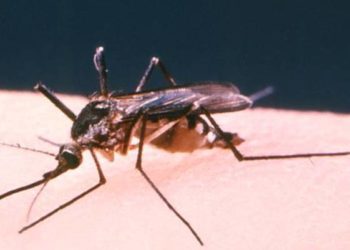The 2 Minute Medicine Podcast Episode 54
July 29th 2024
Welcome to the 2 Minute Medicine Podcast, summarizing the latest medical studies, curated and written by practicing physicians. On this podcast, twice a month, we cover the latest in healthcare news and research evidence.
Our episode is live!
Episode Description
In this episode, we begin with a discussion about our article of the week, which comes from the New England Journal of Medicine and is entitled “Antibiotic Treatment for 7 versus 14 Days in Patients with Bloodstream Infections”. the United States’ measles outbreak. Then in the second half of the episode, we take a closer look at how President Trump’s tariffs may affect healthcare both within the United States and abroad. After that, we examine Pope Francis’ current admission for respiratory illness. Finally, we discuss Utah’s proposal to ban fluoride in water.
Click here to listen to this episode on Apple podcast
Click here to listen to this episode on Spotify
Transcript
[Deepti] Welcome to the 2 Minute Medicine Podcast, summarizing the latest medical studies, curated and written by practicing physicians.
For our full suite of daily medical study summaries and updates written by practicing doctors, please visit our website at 2minutemedicine.com to start reading new daily content right now, for free. On this podcast, twice a month, we cover the latest in health care news and research evidence. We are your hosts Deepti and Andrew.
[Andrew] Our article of the week comes from the New England Journal of Medicine and is entitled “Antibiotic Treatment for 7 versus 14 Days in Patients with Bloodstream Infections”.
Bloodstream infections are common and rank among the top seven causes of death globally. Early and appropriate antibiotic therapy is critical for improving survival, but the required duration of treatment is understudied; short courses of antibiotic treatment have raised concerns about relapsing infection and selection of resistance. In the absence of evidence regarding treatment duration for patients with bloodstream infections, recommendations have varied and median durations of treatment have been 14 days or longer. This multicenter noninferiority trial compared the effects of seven days of antibiotic treatment with those of 14 days of treatment on mortality among hospitalized patients with bloodstream infections. Patients with a blood culture positive for a pathogenic bacterium (excluding Staphylococcus aureus, S. lugdunensis, or bacteremia from rare organisms requiring prolonged treatment) who were not severely immunocompromised and did not have prosthetic heart valves, endovascular grafts, or a documented or suspected infectious syndrome for which prolonged antibiotic treatment would be necessary were included. The primary outcome was death from any cause by 90 days following diagnosis. A total of 3,608 patients were included in the study, with 1,814 assigned to the seven-day group and 1,794 assigned to the 14-day group. Death by 90 days occurred in 14.5% of patients in the seven-day group compared with 16.1% of patients in the 14-day group (difference, -1.6 percentage points; 95% Confidence Interval [CI], -4.0 to 0.8). As such, seven days of antibiotic treatment was noninferior to 14 days of treatment. The difference in bacteremia relapse between the two groups was 0.4 percentage points (95% CI, -0.6 to 1.4) and the median number of antibiotic-free days by day 28 was higher in the seven-day group than in the 14-day group. Other secondary outcomes, including length of stay, vasopressor use, mechanical ventilation use, antimicrobial-related adverse outcomes, C. difficile infections, and infection or colonization with antibiotic-resistant organisms were similar between the two groups. In summary, seven days of antibiotic treatment for hospitalized patients with bloodstream infections was shown to be noninferior to 14 days of antibiotic treatment.
[Andrew] Now, let’s take a look at the Scan.
The Story: As vaccination rates decline, the United States is experiencing a rapidly growing outbreak of measles, a highly contagious viral illness, that is linked to the United States’ first measles-related death in a decade.
So, how bad is the current outbreak?
As of March 6, 2025, the Centers for Disease Control and Prevention (CDC) reported 222 measles cases in the United States. On February 26th, a child in West Texas passed away from the infectious disease, the U.S.’ first measles death since 2015. This is one of the worst measles outbreaks in recent years, with 285, 59, and 121 cases in 2024, 2023, and 2022, respectively.
[Deepti] Measles, also known as rubeola, is a highly contagious illness caused by the measles virus. It is so infectious that CDC researchers estimate nine out of ten unvaccinated people will develop measles infection if exposed to close contact. Children are primarily affected, with 34% and 45% of current U.S. cases affecting patients under 5 years old and children between 5-19 years old, respectively.
Patients develop a prodrome stage lasting around 3-7 days of fever, cough, runny nose, and conjunctivitis. This is followed by an exanthem stage characterized by a rash that typically begins behind the ears and spreads to the rest of the body, sparing the palms and soles. There is no cure once infected, but the prognosis is excellent in most cases, particularly if the patient is vaccinated. However, as many as 1 in every 20 children with measles develop pneumonia, the most common cause of death from measles, and 1 in every 1000 children develop encephalitis, or inflammation of the brain, which can lead to death or long-term complications such as deafness and intellectual disability.
You may be wondering, how can we curtail the current outbreak and prevent future ones?
The current outbreak has led experts to urge people to get themselves and their families vaccinated. Of the 222 U.S. cases, 94% have been unvaccinated. Vaccination rates have unfortunately been declining in recent years, leaving unprotected children susceptible and increasing rates of exposure. The CDC says one dose of the measles, mumps, and rubella vaccine is 93% effective while two doses are 97% effective. The side effects are also minimal and mild. Measles was officially eliminated from the United States in 2000; it is to everyone’s benefit that it remains that way. Next, let’s take a closer look at tariffs and healthcare
[Andrew]On March 4, 2025, President Trump’s tariffs on imports from Canada, Mexico, and China went into effect. This included a doubling of Chinese tariffs to 20% and 25% tariffs on all Canadian and Mexican products, except Canadian energy, which was limited to 10%. Experts are concerned these tariffs will negatively impact healthcare.
80% of active pharmaceutical ingredients, the substances in drugs responsible for their beneficial health effects, are produced outside of the United States, with a growing proportion sourced from China. 69% of U.S. medical devices are manufactured outside the country, with Mexico being the largest exporter of medical goods to the United States. Trump’s tariffs will increase the price of everyday medicine, from generic antibiotics to blood pressure cuffs to ultrasound machines.
In a poll of 200 healthcare executives, over 80% expected costs for hospitals and health networks to increase by at least 15% over the next 6 months. 90% said they will need to shift increased costs to insurers and patients. In addition to limiting access to essential medical equipment, these tariffs will make even more inaccessible an already expensive system, disproportionately affecting low-income and chronically ill patients. Several healthcare organizations, including the American Healthcare Association (AHA), have asked the Trump administration to provide exemptions for healthcare-related supplies. In the meantime, we must all adapt to ensure patients still get the care they need
Next, as you may have heard, a discusstion about Pope Francis, the head of the Catholic Church, who was admitted to Rome’s Agostino Gemelli Hospitalon February 14, 2025, for bronchitis, a condition characterized by inflammation of the trachea and large airways.
[Deepti] That’s right. It is typically self-limiting and management involves symptom treatment and supportive care such as oxygen therapy.
However, several risk factors have complicated Pope Francis’ hospital stay. At 88 years old, his immune system is significantly weaker than younger individuals. According to the Holy See Press Office, Pope Francis also has underlying bronchiectasis, an underlying lung disease, and underwent partial right lung resection in his early 20s following a respiratory infection. Altogether, these factors hamper improvement and increase the risk of complications. Unfortunately, the Pope developed bilateral, polymicrobial pneumonia on his 4th day of admission. This means he has an infection in both lungs caused by multiple viruses, bacteria, or even fungi.
Like bronchitis, pneumonia has good outcomes with proper treatment. However, the underlying issues mentioned previously have led to a more difficult stay. In addition, he had two episodes of “acute respiratory insufficiency”, caused by mucus accumulation, and required non-invasive mechanical ventilation. However, for the first time since his admission, the Vatican reported on March 8th that the Pope has shown a gradual, slight improvement. While he faces a long road ahead, Pope Francis is receiving the best care available. Last but not least, a conversation about why water fluoridation has been making the headlines recently
[Andrew] On February 21, 2025, the Utah State Senate passed a bill that prohibits adding fluoride to public water systems. The measure will go into effect on May 7, 2025, if Utah Governor Spencer Cox signs the legislation. Although he hasn’t officially done so, he said in an interview this past weekend that “it’s not a bill I felt strongly about; it’s not a bill I care that much about, but it’s a bill I will sign.” This will make Utah the first state to ban the addition of fluoride.
This comes after Robert F Kennedy Jr., the United States Secretary of Health and Human Services, recently made comments that the Trump administration would push to remove fluoride from drinking water because it “is an industrial waste associated with arthritis, bone fractures, bone cancer, IQ loss, neurodevelopmental disorders, and thyroid disease.”
[Deepti] According to the Centers for Disease Control and Prevention, fluoride is a mineral that prevents cavities by strengthening the tooth’s enamel, protecting it against acid produced by bacteria that causes tooth decay. It has been common practice nationwide since the 1950s and reduces tooth decay by about 25%. It is not only cheap and effective, but it also has minimal side effects. It can cause skeletal fluorosis, or brittle bones, but only at doses not found in highly regulated public water systems.
[Andrew] Thank you for joining us today for this episode of the 2 Minute Medicine Podcast. New episodes come out every other week and all of our content has been curated and written by practicing physicians.
We would like to thank Anna Yang, Keira Liblik, and Alex Xiang for contributing to this week’s episode
Please head to our website at 2minutemedicine.com to learn more and to access all of our content including medical study summaries, visual abstracts, excerpts from our Classics book series which is available on Amazon, and The Scan, which is our medical newsletter.
Thank you so much once again. To make sure that you don’t miss any of our content please subscribe and follow us on Twitter or Instagram @2MinMed
New episodes come out every other week and all of our content has been curated and written by practicing physicians.
Thank you so much once again. To make sure that you don’t miss any of our content please subscribe and follow us on Twitter or Instagram @2MinMed
©2025 2 Minute Medicine, Inc. All rights reserved. No works may be reproduced without expressed written consent from 2 Minute Medicine, Inc. Inquire about licensing here. No article should be construed as medical advice and is not intended as such by the authors or by 2 Minute Medicine, Inc.









